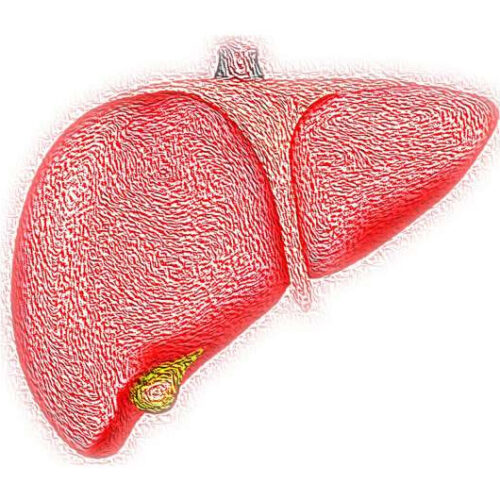by Karolinska Institutet Putative model of the two different types of MASLD. Credit: Nature Medicine (2024). DOI: 10.1038/s41591-024-03284-0 Researchers at Karolinska Institutet and the University of Gothenburg have identified two types of metabolic-associated fatty liver disease—a liver-specific type and a systemic type that affects other organs and tissues. The discovery could lead to improved diagnosis and treatment of...
Tag: <span>fatty liver disease</span>
MASH discovery redefines subtypes with distinct risks: shaping the future of fatty liver disease treatment
Peer-Reviewed Publication INSERM (Institut national de la santé et de la recherche médicale) Metabolic dysfunction-associated steatotic liver disease (MASLD), formerly referred to as nonalcoholic fatty liver disease (NAFLD), impacts roughly 30% of the global adult population. The disease spans from benign fat accumulation in the liver (steatosis) to its more severe form, metabolic dysfunction-associated steatohepatitis...
Scientists identify key protein in the inflammatory pathway driving fatty liver disease
Graphical abstract. Credit: Immunity (2024). DOI: 10.1016/j.immuni.2024.08.016 Scientists at the Agency for Science, Technology and Research (A*STAR) and the Shanghai Institute of Immunology (SII), along with their international collaborators, have dissected the key signaling mechanism driving inflammation in metabolic dysfunction-associated steatohepatitis (MASH), through which they have also uncovered a promising new protein target to combat the fatty...
A novel approach to combat fatty liver disease
Peer-Reviewed Publication Ecole Polytechnique Fédérale de Lausanne Metabolic dysfunction-associated steatotic liver disease (MASLD) — previously known as “non-alcoholic fatty liver disease” — affects about 25% of the global population. Its severe form, metabolic dysfunction-associated steatohepatitis (MASH), can lead to liver fibrosis and even liver failure. With only one approved treatment currently available, finding solutions for...
Study reveals crucial role of intestinal absorption in preventing dietary-induced fatty liver disease
Researchers found that deficiency of proglucagon-derived peptides can reduce lipid uptake in the intestinal tract. Credit: Dr. Yusuke Seino / Fujita Health University The accumulation of fats in the liver is driven by high-fat diets and obesity, and is becoming an increasingly prevalent global health concern. Characterized by excessive fat accumulation in the liver, this...
New research explores the urea cycle’s strong connection to fatty liver disease
August 13, 2024 by Indiana University School of Medicine New research explores the urea cycle’s strong connection to fatty liver diseaseCredit: Cell Metabolism (2024). DOI: 10.1016/j.cmet.2024.07.007An Indiana University School of Medicine physician scientist is making strides in understanding the molecular origins of fatty liver disease, a leading cause of liver failure in the United States....
New research in fatty liver disease aims to help with early intervention
July 25, 2024 by Julia Milzer, CU Anschutz Medical Campus HFHC-feeding recapitulates MASH phenotype in murine models. Credit: Hepatology (2024). DOI: 10.1097/HEP.0000000000000971A new study brings researchers closer to better understanding the pathology of the fatty liver disease MASH, which stands for metabolic dysfunction-associated steatohepatitis. MASH is a consequence of poor diet and obesity and results...
Dietary vitamin B3 may help lower death risk in nonalcoholic fatty liver disease
Niacin, or vitamin B3, found in fish and other food items, may help reduce the risk of death in NAFLD. Image credit: Anna Tabakova/Stocksy. Nonalcoholic fatty liver disease cases are growing, and the disease is associated with an increased risk of death from cardiovascular disease.Up to 90% of people with obesity have nonalcoholic fatty liver...
Changing levels of NOX4 protein could provide key to understanding fatty liver disease progression
by Monash University Credit: Pixabay/CC0 Public Domain The global rise in obesity and diabetes is leading to an epidemic in fatty liver disease affecting 20%–30% of the world’s population. Almost a third of people with fatty liver disease go on to develop an advanced form of the disease, known as non-alcoholic steatohepatitis (NASH) that can progress...
Study identifies new drug target for preventing fatty liver disease
by eLife Credit: Pixabay/CC0 Public Domain Scientists have found a potential new drug target for untreatable fatty liver disease in humans, according to a study published today in eLife. Their findings, from mice and human liver biopsies, suggest that targeting a receptor found predominantly in the liver could help protect against the build-up of fat, halting...




